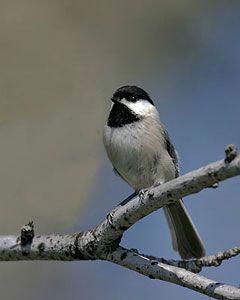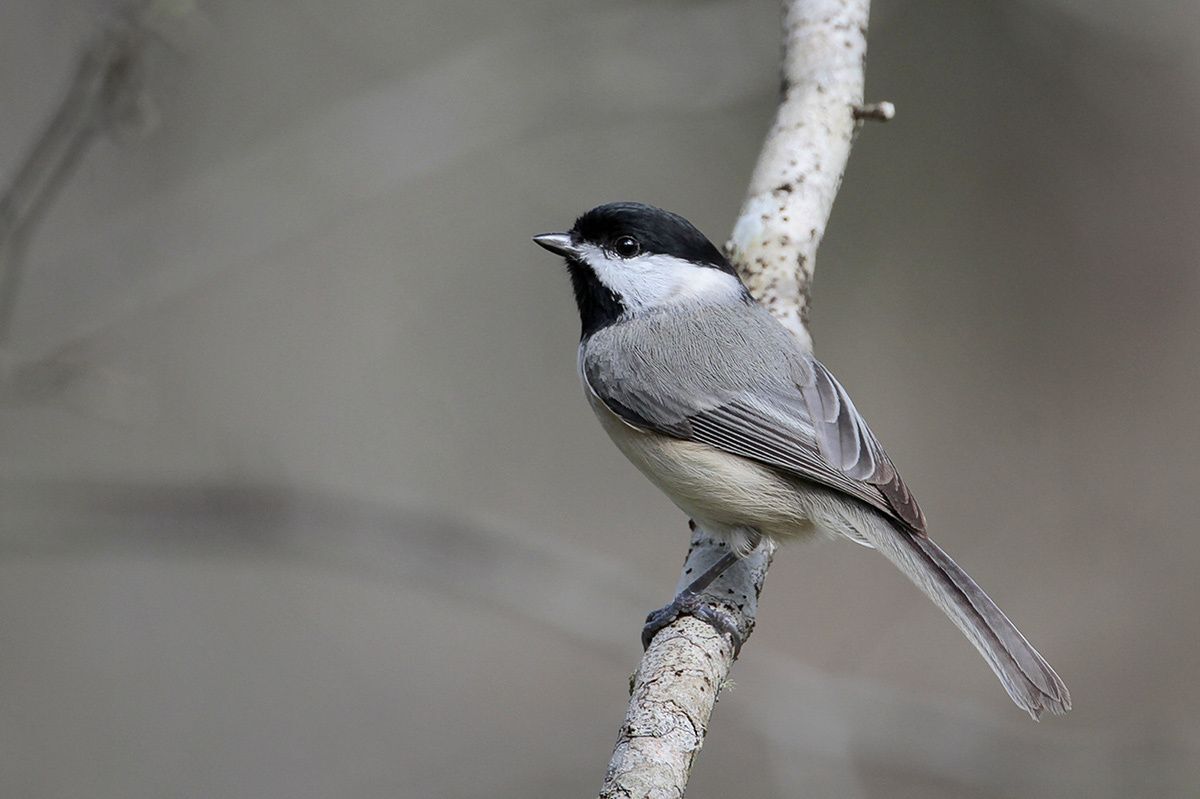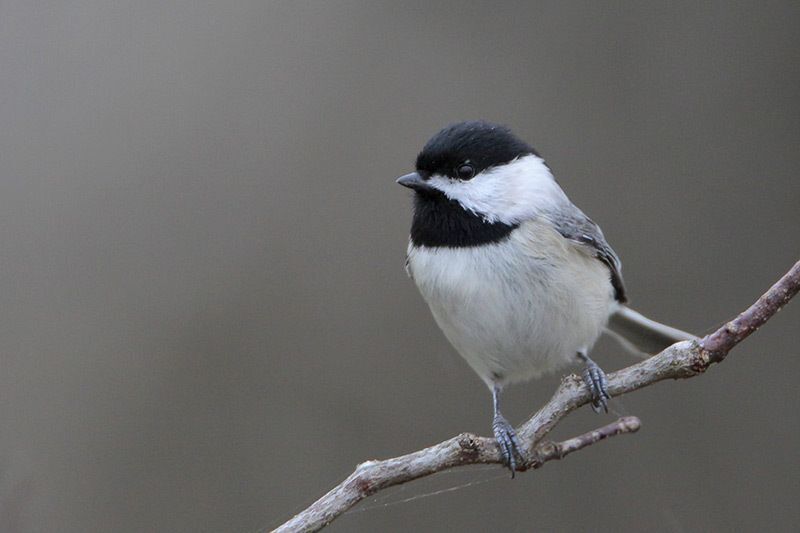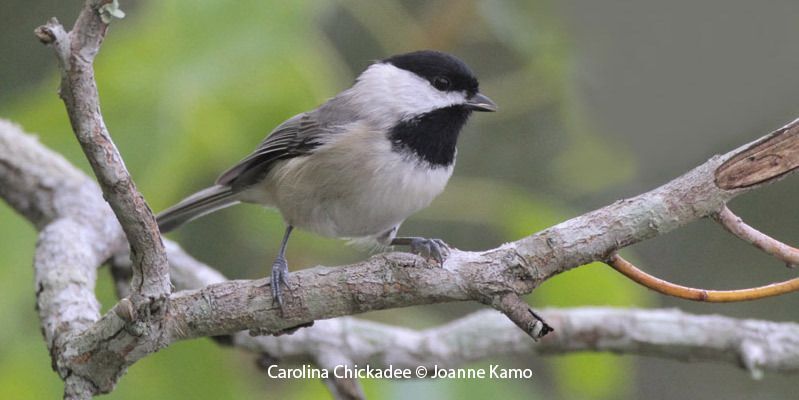
© Wayne Nicholas
Carolina Chickadee
Poecile carolinensis
Family: (Paridae) Chickadees and Titmice
Carolina Chickadees are very common in woodlands and wooded urban areas of Houston throughout the year. They are inquisitive and can be remarkably tame. Their call, a fast chick-a-dee-dee-dee, is well-known to even non-birders. Carolina Chickadees are replaced in the northeast by the Black-capped Chickadees. The two species are very difficult to tell apart. The easiest clue is the Carolina Chickadee's song – a fee bee fee bay which descends at the end. The Black-capped Chickadee sings a slower, two-note fee bee.
Profile by Vicki Stittleburg: Named by John James Audubon while he was in South Carolina, the Carolina Chickadee is a small songbird with a black cap and bib separated by white cheeks. The back, wings, and tail are gray and the underparts are whitish with pale pink flanks.
Carolina Chickadees are very common in woodlands and wooded urban areas of Houston throughout the year. Their diet is primarily insects, supplemented especially in winter with seeds and berries; they readily visit bird feeders for sunflower seeds.
Named for their calls, Carolina Chickadees give a rapid chick-a-dee-dee-dee. They use the calls to convey information about the degree of threat posed by avian predators. Larger, lower-threat predators like a Red-tailed hawk, elicit calls with significantly more introductory ‘chick’ notes and fewer ‘dee’ notes, whereas smaller, higher-threat predators such as an Eastern screech-owl elicit calls with few or no ‘chick’ notes and significantly more ‘dee’ notes.Their song is a four note whistle, fee-bee fee-bay.
Outside of breeding season, chickadees join the company of foraging mixed-species flocks that contain Downy Woodpeckers, Tufted Titmice, Ruby-crowned Kinglets, and several warblers. Look and listen for these tiny acrobatic and inquisitive birds in forested areas or urban and suburban yards or parks with large trees.
Profile by Grace Yaros: Carolina Chickadees are familiar birds across much of the southeastern United States, at home in urban and suburban environments and readily coming to birdfeeders. They have gray backs and wings and are whitish below with a pale orange wash on their sides. They have a black cap and throat with contrasting white cheeks. They are quite vocal, and their namesake “chick-a-dee” calls can alert you to the presence of a nearby flock. Males will also sing to defend breeding territories; their song is variable and consists of 4-6 whistled notes.
They are found from New Jersey and Pennsylvania south through central Florida, with their range extending as far west as central Texas. They inhabit a variety of wooded habitats, from open suburban parks to deciduous or mixed deciduous-coniferous forests. They are generally absent from higher elevation areas throughout the Appalachian Mountains, and in the Appalachians and near the northernmost portions of their range, Carolina Chickadees are generally displaced by or hybridize with Black-capped Chickadees. Carolina Chickadees feed on a diversity of food items. For the majority of the year, they feed mostly on insects and spiders, but fruits and seeds are important additions to their diet, especially during the winter.
Outside of the breeding season, Carolina Chickadees associate in flocks, often with other songbirds such as Tufted Titmice, kinglets, and nuthatches. These flocks will defend their territory from neighboring chickadees. Within these flocks, the chickadees maintain a strict social hierarchy. When a flock disperses during the breeding season, the highest-ranking males and their mates will nest in breeding territories that overlap with the flock’s winter territory. They are cavity nesters, and will readily nest in pre-existing cavities, cavities that they excavate themselves, and in nest boxes. Lower-ranking males must travel further to secure a breeding territory, though some unpaired lower-ranking males may remain on a high-ranking pair’s breeding territory. Carolina Chickadees can be found throughout the Houston area, including Edith L. Moore Nature Sanctuary.
-
Cornell Lab of Ornithology
-
Bird Guide
-
Bird Library

© Greg Lavaty, www.texastargetbirds.com

© Greg Lavaty, www.texastargetbirds.com


